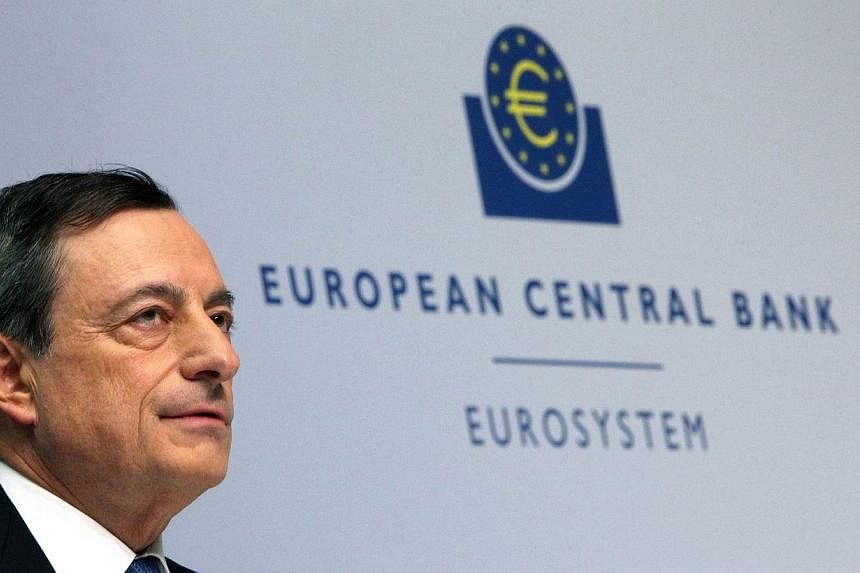In what may be its best and last chance to stimulate growth and ward off deflation across the eurozone, the European Central Bank on Monday will launch its long-awaited 1.1 trillion euro (S$1.64 trillion) quantitative easing (QE) programme.
1. Why the massive QE?
The move comes as traditional efforts to boost sluggish economic activity in the 19-nation eurozone have been exhausted through rate cuts that have brought borrowing costs to nearly zero.
The policy is also being adopted as the eurozone faces growing threats of deflation, in which falling prices lead consumers to put off purchases in expectation they will drop further, sparking a damaging cycle of falling production, job creation and prices.
Thus the aim of QE is three-fold: battle deflation, and produce a level of inflation close, but lower, than the 2 per cent rate which is the mandate of the ECB; create growth and reduce unemployment; and, lower sovereign bond yields to make it easier for countries to access the financial markets.
2. What does it involve?
The strategy behind the ECB's QE programme is similar to that of earlier schemes introduced by the US Federal Reserve and the Bank of England to pump money into the economy with massive purchases of government bonds, aiming to foster easier credit and rising economic activity.
Starting Monday, the ECB will buy around 60 billion euros of public and private bonds each month - for at least 18 months until September 2016.
No actual money is printed. Instead, the ECB will create money electronically and use it to buy the debt that eurozon member countries issue to pay their bills.
This is meant to push down interest rates on bonds and other financial assets, making it cheaper for companies to borrow and invest, increasing spending and employment.
3. How did the ECB get around German opposition to QE?
To address stiff opposition to QE from Germany and several other northern European nations, the bulk of the asset purchases under the scheme will be made by national central banks, which will almost exclusively be buying bonds issued by their own governments.
This is to placate Germany, Europe's paymaster, who then will be off the hook to bail out another country.
The ECB will only buy in the secondary market.
4. Will it work?
Critics of the QE plan have warned that private-sector banks may not respond to the ECB's measures by boosting lending and that there is little demand for cash from companies and consumers anyway.
For example, if a bank that sells government bonds to a national central bank decides to use the fresh money to increase its cash balance, or repay back some liabilities, then that would not create growth and inflation in the domestic economy. Furthermore, there might not be adequate demand for the banks to lend out this new money.
ECB president Mario Draghi has dismissed these doubts, and noted in his announcement of QE's kickoff last Thursday that markets have already reacted with some optimism to the plan. Just the announcement of the ECB QE has lowered significantly sovereign bond yields, and a further drop will probably occur once the programme starts.
Draghi has similarly waved off concerns that private banks facing increasingly stiff post-crisis capital requirements may not want to part with bonds the ECB will need in huge quantities come Monday, saying that those same banks did not hesitate to sell bonds on their books when the Fed and BoE rolled out QE policies.
Sources: AFP, Financial Mirror


